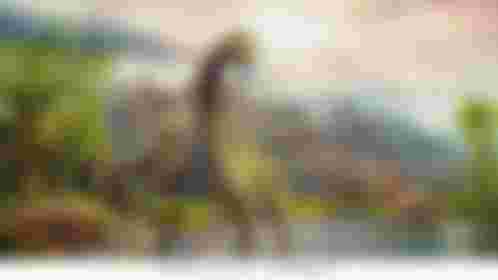
Dinosaurs are a diverse group of reptiles of the clade Dinosauria. They first appeared during the Triassic period, between 243 and 233.23 million years ago, although the exact origin and timing of the evolution of dinosours is the subject of active research. They became the dominant terrestrial vertebrates after the Triassic-Jurassic Extincition event 201.3 million years ago; their dominance continued through the Jurassic and Cretaceous periods.

The Cretaceous-Tertiary extinction event, or the K-T event, is the name given to the die-off of the dinosaurs and other species that took place some 65.5 million years ago. For many years, paleontologists believed this event was caused by climate and geological changes that interrupted the dinosaurs’ food supply. However, in the 1980s, father-and-son scientists Luis (1911-88) and Walter Alvarez (1940-) discovered in the geological record a distinct layer of iridium–an element found in abundance only in space–that corresponds to the precise time the dinosaurs died. This suggests that a comet, asteroid or meteor impact event may have caused the extinction of the dinosaurs. In the 1990s, scientists located the massive Chicxulub Crater at the tip of Mexico’s Yucatán Peninsula, which dates to the period in question.

Dinosaurs roamed the Earth for 160 million years untill their sudden dimense about some 65.5 million years ago, in an event now known as the Cretaceous-Tertiary, or K-T, extinction event. (“K” is the abbreviation for Cretaceous, which is associated with the German word “Kreidezeit.”) Besides dinosaurs, many other species of mammals, amphibians and plants died out at the same time. Over the years, paleontologists have proposed several theories for this extensive die-off. One early theory was that small mammals ate dinosaur eggs, thereby reducing the dinosaur population until it became unsustainable. Another theory was that dinosaurs’ bodies became too big to be operated by their small brains. Some scientists believed a great plague decimated the dinosaur population and then spread to the animals that feasted on their carcasses. Starvation was another possibility: Large dinosaurs required vast amounts of food and could have stripped bare all the vegetation in their habitat. But many of these theories are easily dismissed. If dinosaurs’ brains were too small to be adaptive, they would not have flourished for 160 million years. Also, plants do not have brains nor do they suffer from the same diseases as animals, so their simultaneous extinction makes these theories less plausible.

Though the K-T extinction was not the first such massive die-off in history, nor was it the largest. The permian triassic extinction event, known as the great dying occurred 251.4 million years ago and eradicated 96% of all marine species and 70% of all Terrestrial vertebrates species on Earth.
To be Continue....




Oh! You made me think again! My childhood was also so beautiful. Full of joy and happiness.You made me nostalgic.